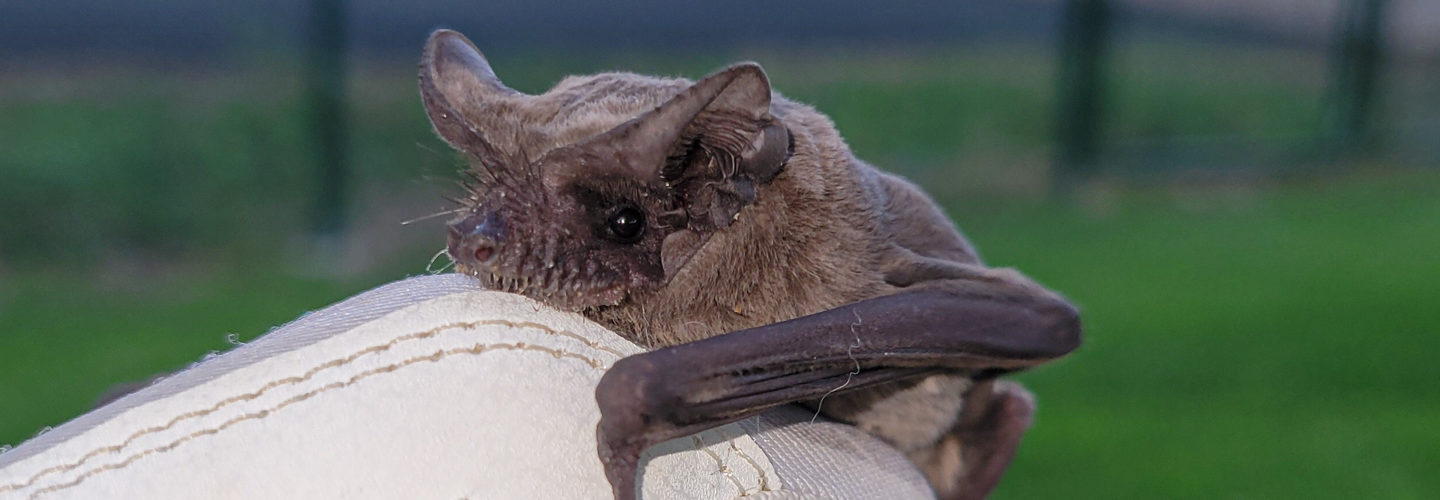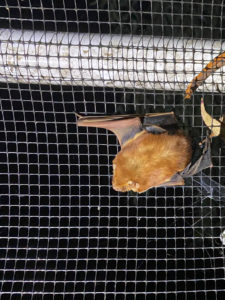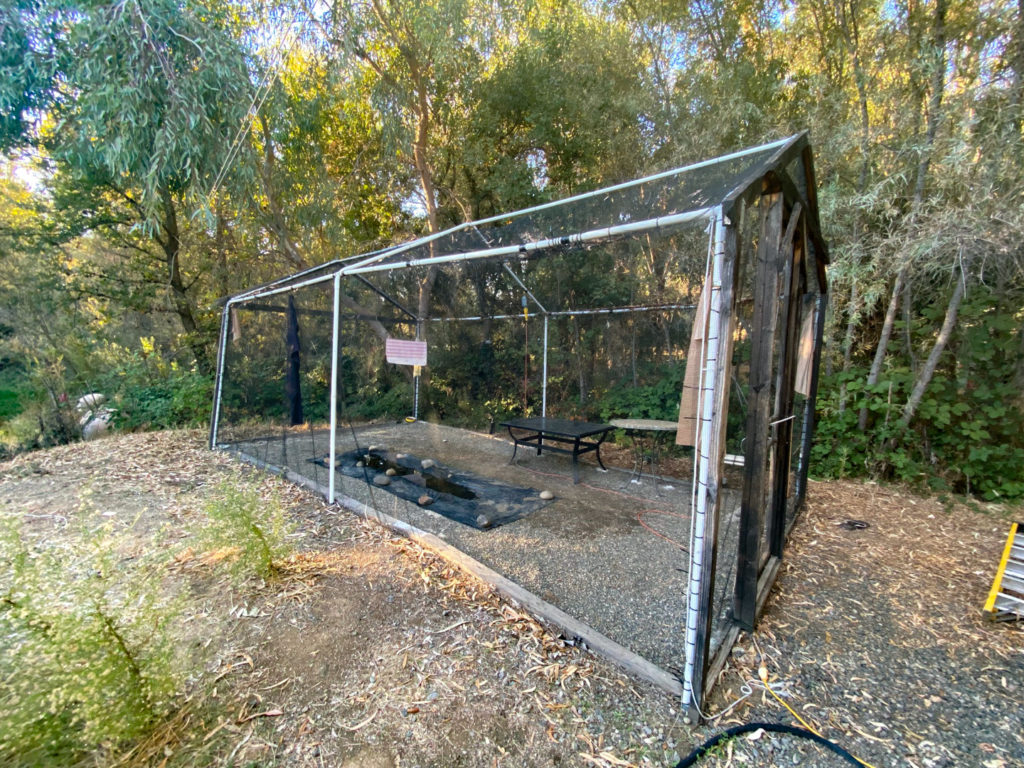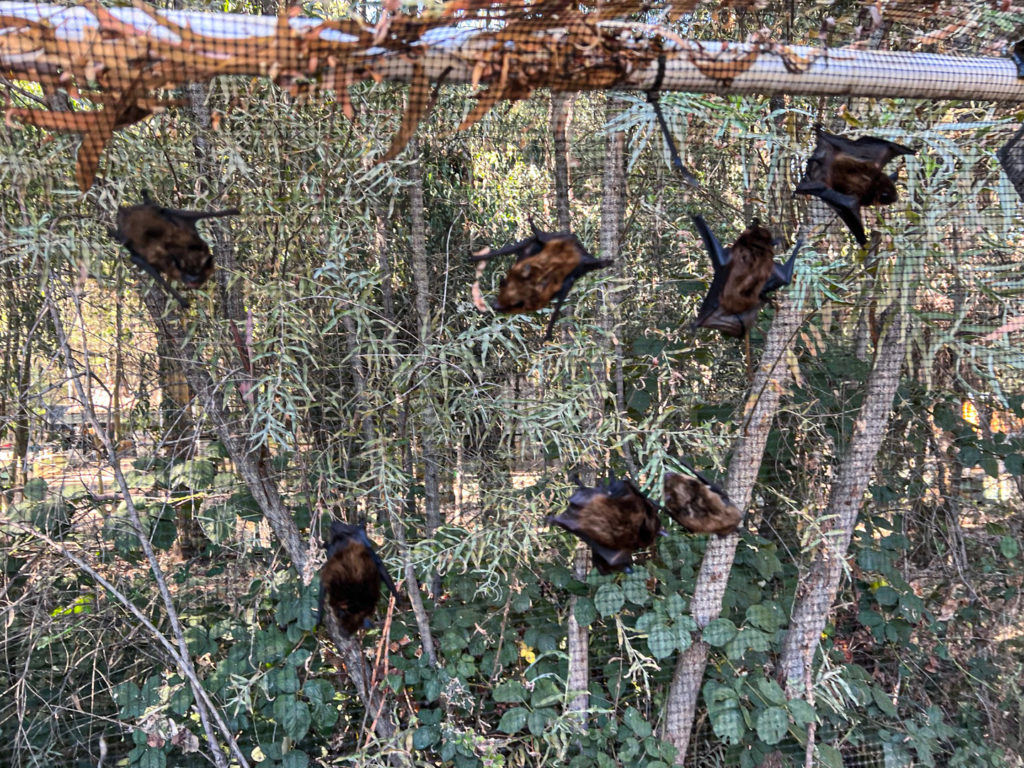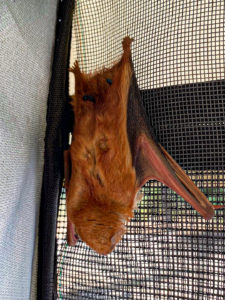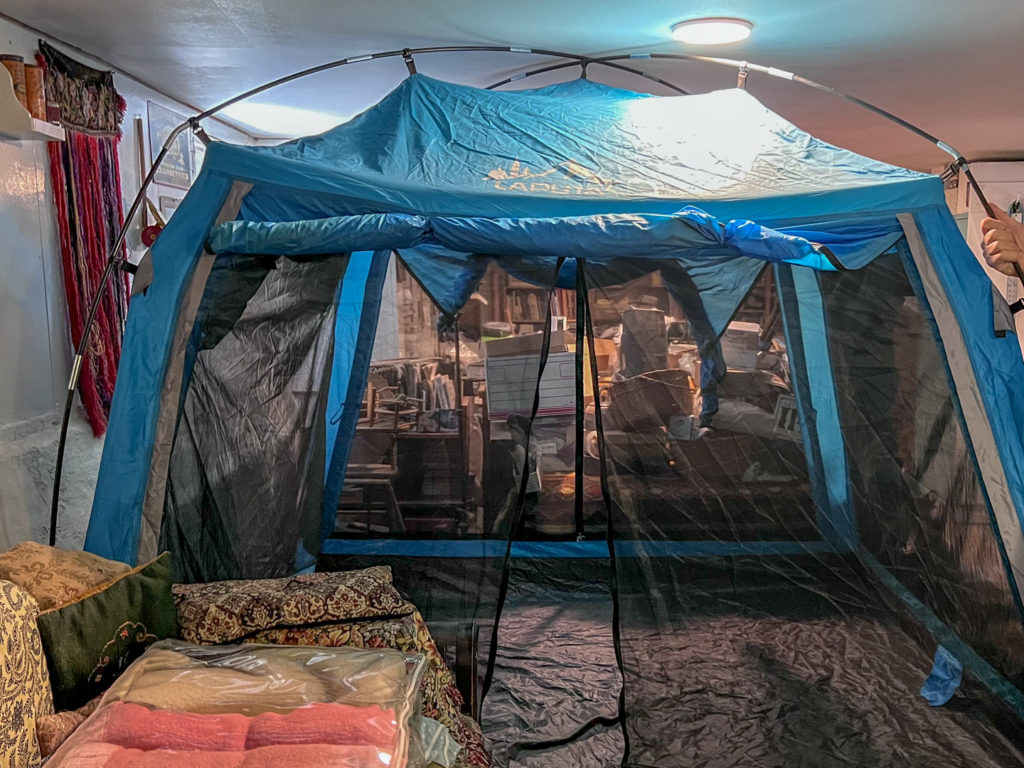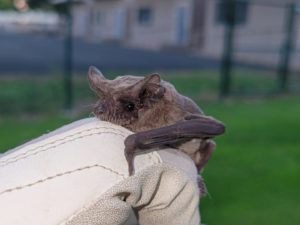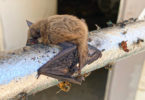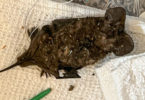We often get questions about the kinds of facilities that NorCal Bats has for housing the rescued bats that we have in our care. Here’s a look at one very important facility we use – bat flight cages.
NorCal Bats is dedicated to the rescue, rehabilitation, and release of bats in Northern California. An important part of the rehabilitation process is getting them exercise and giving them a chance to fly in a safe, controlled environment. This is where a flight cage is invaluable.
Outdoor Bat Flight Cages
We use the flight cage for a variety of situations:
- Some of the bats in our care are recovering from an injury or illness. They need to build up their strength and get exercise in anticipation of being released. We also may have to hold on to the bats until the right time of year for release.
- Young rescue bats that come in as pups will have to learn to fly (as well as build up their strength).
- We have some bats that cannot be released because they have permanent injuries that prevent them from flying properly. They still spend time in the flight cage because they can crawl up the sides and have lots of room to roam and get exercise.
Here’s our primary flight cage. It is about 10’ x 20’, covered with a plastic mesh (rather than netting). There is plenty of room for them to fly. The mesh sides allow the bats to crawl up the sides very easily. If a flying bat ends up on the ground many species have a hard time getting up off the ground, so being able to crawl up to get some height is very important. Also, this is how the bats that can’t fly get exercise. The mesh sides also allow some flying bugs to come in, which gives the bats a chance to practice catching a meal.
There is a small “pond” of water in the floor of the cage, which the bats will drink from and possibly even swim in (many bat species are good swimmers).
At one point earlier this season we had 8 big brown bats, 3 tiny Myotis pups, three Mexican free-tailed pups, and one canyon bat, all in the flight cage at the same time!
We only place bats in this outdoor flight cage during the night. This is the time that the bats are the most active, and we want them to get used to flying at night. Temperatures generally are more moderate at night, and bats can be very sensitive to high daytime temperatures.
Since the sides of the flight cage are a mesh, we do get some flying bugs in there at night for them to try to catch, but generally the bats are getting fed while they are indoors, rather than in the outdoor flight cage. We did try putting a UV light in the flight cage during the evening, hoping to draw in more flying insects, but bats can see UV light and it seemed to bother them, they flew less when the light was on. In any case, it is easier for us to monitor how much they are eating when we feed them indoors.
An interesting side note – when we have bats in the flight cage, we notice that wild bats will buzz around and over. Are they checking out who is in the flight cage?
An Indoor Bat Flight Cage
Another of our volunteers doesn’t have room for an outdoor flight cage. She has a 10’ x 10’ tent set up in her basement! This works well enough for the bats to get some needed exercise. If a bat is flying well and needs more room for exercise, they can be moved to the larger outdoor flight cage in another volunteer’s yard.
Beyond Bat Flight Cages
I hope you’ve enjoyed this quick tour of our bat flight cages. In future articles I’ll talk about the other aspects of our bat rehabilitation program, such as how they are housed when not in the flight cage, how we feed hungry bats while they are in our care, and the stories about some of the rescue bats that make it through our program. If you want to be notified when we publish a new article you can subscribe to our newsletter.
If you have any questions about how we care for bats, please leave a comment below.
We Need Your Help
NorCal Bats is a run by handful of volunteers who love bats! We work hard to rehabilitate rescued bats so they can be released. We spend our own money to build facilities such as the flight cages, as well as all that it takes to rescue and care for injured and sick wild bats.
The flight cage I’m showing here needs some major upgrades and repairs. In addition, we have a second flight cage at another location that needs to be totally rebuilt, as it isn’t usable at this time. We need your help!
Please consider donating to NorCal Bats via our “How we are Funded” web page, to help with our bat flight cages. Thank you!

